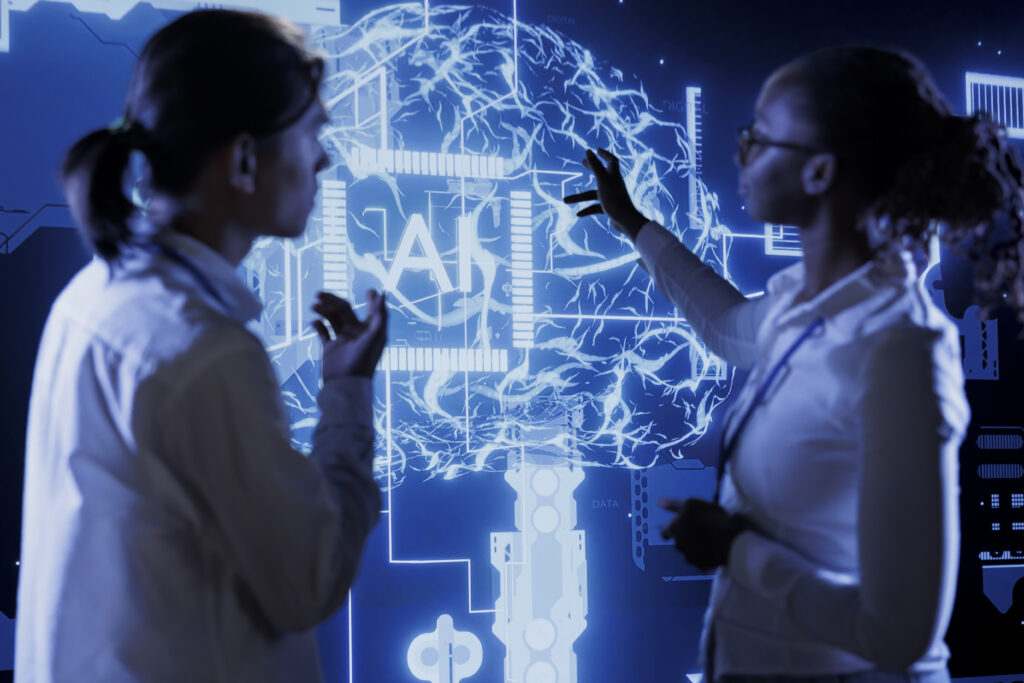In a bold move to position itself as a leader in artificial intelligence, the Indian government has announced plans to develop a customized AI Foundational model with an investment of Rs. 2,000 crores. This initiative, spearheaded by the Indian AI Innovation Centre under the Indian AI Mission, aims to cater to diverse applications, potentially developing a large action model or a large multimodal model. A significant focus will be on generating output in multiple native languages, leveraging projects like Bhashini.
The government’s vision aligns with the “National Strategy for Artificial Intelligence” by NITI Aayog, which emphasizes the #AIforAll initiative. This strategy is designed to drive inclusive growth and social development, establishing India as a hub for emerging AI technologies. Here is a detailed look into the various facets of this initiative and its implications.
Vision and Approach of Developing AI Foundational Model
#AIforAll Initiative: This initiative aspires to harness AI for economic growth and social development, ensuring that the benefits of AI are accessible to all sections of society. It seeks to transform India into a “Garage” for emerging economies, where innovative AI solutions can be developed and evaluated.
Three-Pronged Approach:
- Exploratory Proof-of-Concept Projects: Implement AI in critical sectors such as agriculture and health to demonstrate its potential benefits.
- Vibrant AI Ecosystem: Develop a comprehensive AI ecosystem to support the growth and application of AI technologies across the country.
- Collaborations: Forge partnerships with experts and stakeholders to ensure effective AI deployment and innovation.
Key Focus Areas
- Healthcare: AI will enhance access to quality healthcare, enable personalized treatment, facilitate early diagnosis, and help manage healthcare workforce challenges.
- Agriculture: AI can improve productivity, predict crop yields, and manage resources efficiently, addressing some of the critical challenges faced by Indian farmers.
- Education: Customized learning experiences, intelligent tutoring systems, and enhanced administrative efficiencies are some of the ways AI can revolutionize education in India.
- Smart Cities and Infrastructure: AI can contribute to efficient urban planning, traffic management, and infrastructure development, making cities smarter and more livable.
- Smart Mobility and Transportation: AI-driven autonomous transportation solutions, traffic decongestion strategies, and better urban connectivity can transform the transportation sector.
Challenges and Solutions of AI Foundational Model

To fully realize the potential of AI, the Indian government acknowledges several challenges and proposes solutions:
- Research and Expertise: Establish Centers of Research Excellence (CORE) and International Centers of Transformational AI (ICTAI) to promote AI research and application.
- Data Ecosystem: Enhance data availability, accessibility, and quality to support AI-driven solutions.
- Resource Cost and Awareness: Reduce the cost of AI adoption and increase awareness through government initiatives and public-private partnerships.
- Ethics and Privacy: Implement frameworks to ensure ethical data management, privacy, and security.
- Collaborative Approach: Encourage a collaborative model involving the government, private sector, and academia to boost AI adoption and innovation.
AI translation challenges
Bhashini, an AI-based language translation platform and model initiated by the IT ministry and launched in 2022, serves as a relevant example. Typically, foundational models are developed by both private entities and governmental bodies. According to data from the Stanford Center for Research on Foundational Models, over 330 such models have been developed by private firms and governments globally as of April 2024.
Despite facing challenges such as hallucination, bias, and comprehension deficits, models developed by entities like Microsoft-backed OpenAI, Google, and Amazon maintain a competitive edge. The Indian government aims to use publicly available data, digitised literature, and anonymised non-personal data obtained from various stakeholders to train its model.
Government’s Role
The Indian government envisions itself as a catalyst for AI development, supporting infrastructure, fostering innovation, and creating demand for AI solutions. Key roles include:
- Catalyst for AI Development: Support infrastructure development, foster innovation, and create demand for AI solutions.
- Ethical AI Development: Establish ethics councils to guide AI technology development and deployment.
- IP Framework: Develop a robust intellectual property framework to support AI innovation.
Training the AI Foundational Model
The foundational AI model will be trained using publicly available data, digital copies of books, journals, and research papers from public libraries, and additional non-personal, anonymized data provided voluntarily by researchers, startups, or enterprises. This approach ensures the model is built on a rich and diverse dataset, drawing on global publicly available datasets and open-source tools for machine learning.
Understanding AI and Foundational Models
Artificial Intelligence (AI): AI encompasses technologies that enable machines to mimic human perception, comprehension, and actions at high intelligence levels. Through the acquisition and processing of images, sounds, and voices, AI systems can actively sense their environment. With the help of natural language processing and inference engines, AI systems analyze and understand data, making informed decisions and operating in real-world scenarios.
Foundational Models: These models, often generative AI, generate output from one or more inputs in human language instructions. They are trained on broad data sets and can be adapted for a wide range of use cases. Examples include language models like Google’s BERT and OpenAI’s GPT series, as well as models for images, music, and robotic control.
Economic Impact of AI Foundational Model in India
AI has the potential to drive significant economic growth by augmenting traditional factors of production such as labor, capital, and innovation. It can overcome physical limitations, open new sources of value, and enhance productivity. Key economic impacts include:
- Intelligent Automation: Automate complex tasks requiring adaptability and agility across industries.
- Labor and Capital Augmentation: Enable humans to focus on high-value tasks, improving capital efficiency.
- Innovation Diffusion: Propel innovations across the economy, creating new goods, services, and opportunities.
In conclusion, India’s ambitious AI initiative aims to harness the transformative power of AI for inclusive growth and innovation. By developing a robust AI ecosystem and addressing key challenges, India is poised to become a global leader in AI, driving economic growth and social development through innovative technologies.
